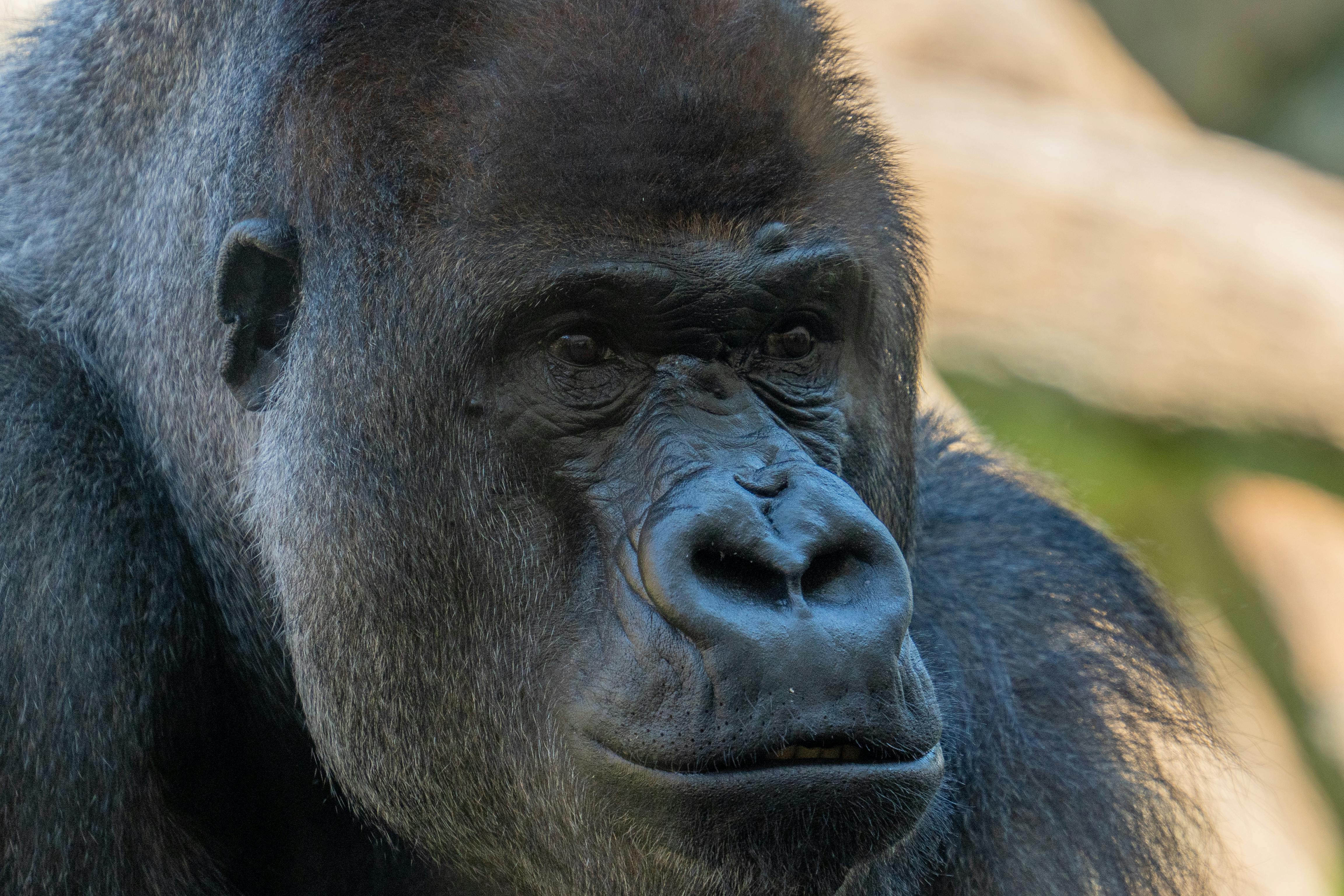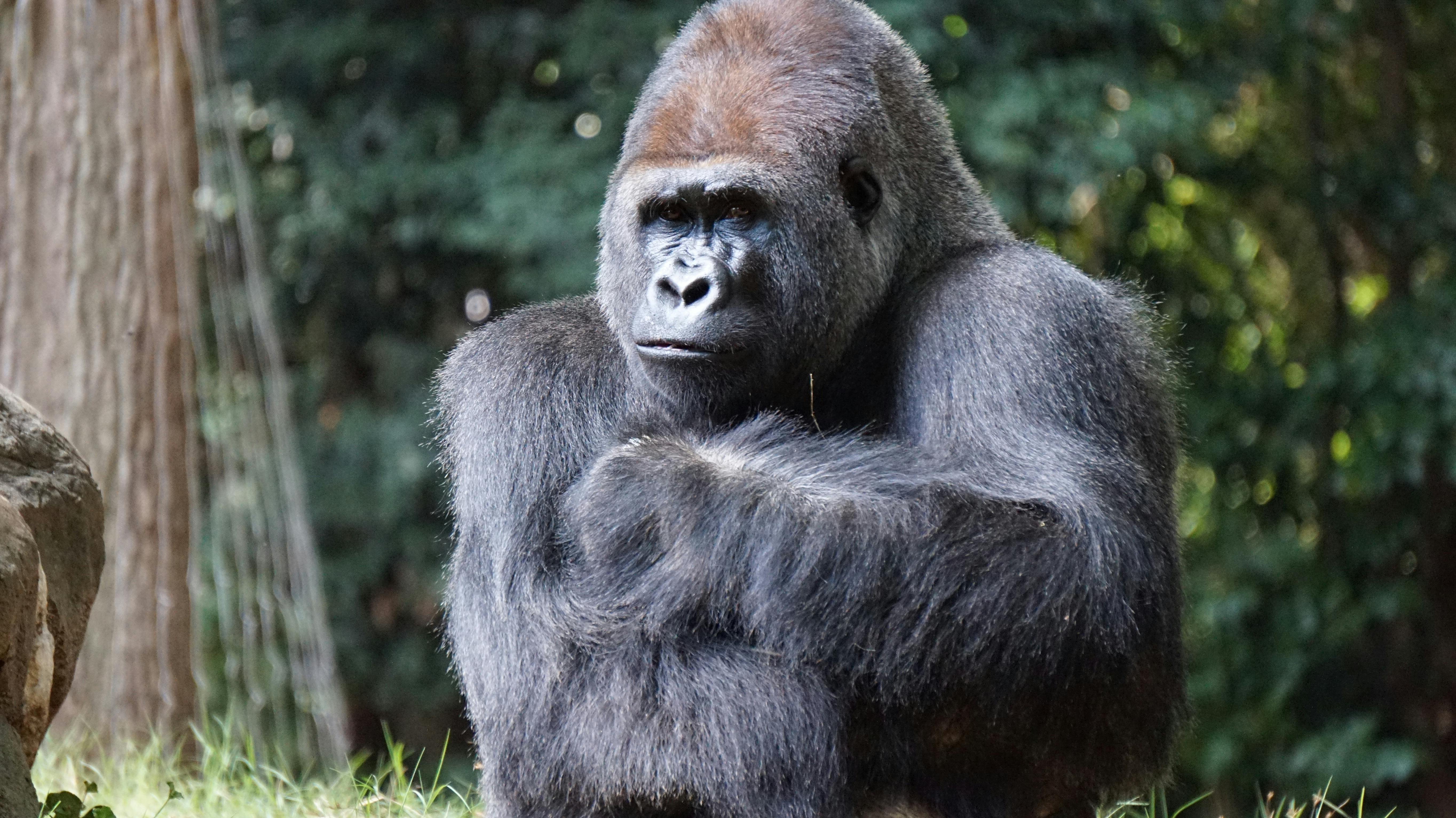Gorillas are the largest living species in the superfamily of humanoid primates (Hominoidea) and are of scientific importance for their genetic affinity with humans. Living in the tropical forests of Central and East Africa, their complex social behavior, high cognitive abilities, environmental adaptations and cultural elements make them a fundamental subject of study for disciplines such as evolutionary biology, primatology, anthropology and conservation biology. However, factors such as habitat destruction, illegal hunting, infectious diseases and climate change are among the serious factors threatening the extinction of gorillas. Therefore, the morphology, behavioral ecology, social structure and threats faced by the species are comprehensively examined, together with conservation strategies.
Taxonomy, Evolution and Morphological Features
Systematic Location
Gorillas are in the family Hominidae of the order Primates and are classified under the genus Gorilla. This genus currently includes two species and four subspecies:
Western Gorilla (Gorilla gorilla):
- Gorilla gorilla gorilla gorilla (Western lowland gorilla)
- Gorilla gorilla diehli (Cross River gorilla)

Western Lowland Gorilla (Pexels)
Eastern Gorilla (Gorilla beringei):
- Gorilla beringei beringei (Mountain gorilla)
- Gorilla beringei graueri (Eastern lowland gorilla or Grauer's gorilla)

Eastern Lowland Gorilla (Pexels)
There are genetic variations among these species, as well as differences in habitat, feeding habits, social structure and threats. Mountain gorillas, in particular, are vulnerable to genetic diversity because they live in isolated populations.
Evolutionary Process
Molecular data suggest that the last common ancestor of gorillas with chimpanzees and humans lived around 8-10 million years ago. Gorilla split into Western and Eastern species about 2 million years ago. This distinction is the result of geographic isolation, and genetic drift and adaptive evolutionary processes have deepened the differences between these species.
Morphological Features
Gorillas are characterized by their broad shoulders, blunt skull, strong jaw muscles and long arms. Adult males weigh between 140 and 200 kg, females between 70 and 120 kg. Males are called "silverbacks" because of the silvery hair on the back that develops after puberty. Sexual dimorphism is quite pronounced in gorillas, with males differing from females in both size and facial shape.

Gorilla Skeleton Structure (Created by artificial intelligence)
Social Structure, Cognitive Abilities and Behavioral Ecology
Group Structure and Leadership
Gorillas typically live in groups of 5 to 30 individuals. These groups usually consist of an adult male, several females and their offspring. The group leader, the silverback male, is responsible for the safety, direction and internal social order of the group. Females often make group choices based on the male's social status. In-group cohesion is achieved through grooming, play and close contact.
In some cases, groups with more than one male individual can be observed, but these situations are temporary and the hierarchy is reorganized by competition. Social structures are flexible and it is possible to change groups due to birth, migration or death.
Communication Methods
Gorillas use more than 25 forms of vocal communication. These vocal signals include grunts, groans, yells and strokes. Facial expressions and body language are also commonly used in social interaction. Breast-beating behavior can be both a threat and a status indicator. Facial expression and eye contact are effective in communicating aggression or peaceful intentions.
Feeding Ecology
The diet of gorillas is highly plant-based. They consume leaves, stems, fruits, bark, roots, flowers and rarely insects. Mountain gorillas consume less fruit and more leaves because they live at high altitudes, while lowland gorillas are more fruit-oriented. Their daily energy needs can vary between 3,000-6,000 kcal. Feeding behavior varies seasonally and this can also affect migratory behavior.
Tool Use and Cognitive Abilities
Although gorillas have been observed to have limited tool use in their natural habitat, they are known to exhibit complex problem-solving behaviors and symbolic communication skills in captivity. Some studies have documented gorillas using sticks for measuring, testing water depth or cleaning food. Gorillas can also exhibit advanced cognitive processes such as empathy, grief, play and even humor.
Conservation Status, Threats and Sustainable Conservation Strategies
Protection Status
All gorilla subspecies are listed as "Endangered" or "Critically Endangered" by the IUCN. In particular, Gorilla beringei beringei and Gorilla gorilla diehli are on the brink of extinction due to their extremely low populations.
Habitat destruction
Gorilla habitats have been greatly fragmented by human activities such as agricultural expansion, industrial mining, timber production and road construction. This fragmentation reduces genetic diversity by restricting gene flow between populations.
Hunting and Illegal Trade
The bushmeat trade leads to the killing of gorillas as both food and fetish objects. In addition, the illegal sale of baby gorillas as pets threatens the sustainability of populations as it necessitates the killing of mothers.
Zoonotic Diseases
Zoonotic pathogens such as the Ebola virus have had devastating effects on gorilla colonies. Respiratory infections transmitted from humans to gorillas have increased, particularly due to ecotourism practices. It is estimated that more than 5,000 gorillas died from Ebola in Gabon and Congo alone in 2002-2003.
Conservation Approaches
- Protected Areas and National Parks: Parks such as Virunga, Bwindi and Odzala-Kokoua are critical areas for gorilla conservation.
- Community-Based Conservation: Projects that support the economic and social development of local people promote the sustainable use of natural resources.
- Research and Monitoring: Observations through GPS tracking, photo traps and genetic analysis help guide conservation efforts.
- Education and Awareness: School programs and media campaigns increase public awareness of gorilla conservation.


